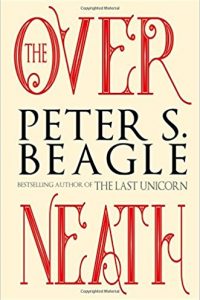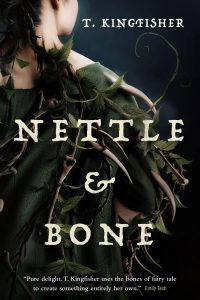Gwenda Bond reviews Elizabeth Hand
 Few things hold as much appeal for the artsy teenager as stories of rabble-rousing, society-defying artists in times past. And yet, this is relatively unexplored ground in YA fiction – with a few notable exceptions, such as Simmone Howell’s Notes from the Teenage Underground and Nikki Grimes’ Bronx Masquerade. In fact, I could think of no immediate examples that incorporate fantasy elements into their tales of young artists finding their way (though I’m sure there must be a few). Now, with Radiant Days, Elizabeth Hand has written a beautiful, strange novel of the fantastic, which shows us two artists emerging from their own very specific – and yet also unexpectedly overlapping – times.
Few things hold as much appeal for the artsy teenager as stories of rabble-rousing, society-defying artists in times past. And yet, this is relatively unexplored ground in YA fiction – with a few notable exceptions, such as Simmone Howell’s Notes from the Teenage Underground and Nikki Grimes’ Bronx Masquerade. In fact, I could think of no immediate examples that incorporate fantasy elements into their tales of young artists finding their way (though I’m sure there must be a few). Now, with Radiant Days, Elizabeth Hand has written a beautiful, strange novel of the fantastic, which shows us two artists emerging from their own very specific – and yet also unexpectedly overlapping – times.
In 1978, Merle Tappitt has just fled an abusive, poverty-ridden backwater childhood for DC and the more bohemian poverty of being broke in art school. Taken under the wing of an older married woman, Clea, who begins to educate Merle in the ways of the world and the body, while encouraging her art and playing model, Merle is beginning to find her voice as an artist… which, of course, gets her kicked out. Art school is too rigid for the art she’s drawn to create. On a trip to New York, Merle shoves away Clea’s attempts to sell her work to a famous art doyenne, and becomes entranced by the possibilities of graffiti after seeing SAMO’s tags all over town. But Merle doesn’t believe in the ‘‘Same Old Shit’’ point-of-view; the tag she adopts is Radiant Days, an eye and a sun.
In 1870, 16-year-old Arthur Rimbaud traverses France, wanting to escape the clutches of his controlling mother. Attempting to travel to Paris without having paid the full fare, he ends up in prison – for a relatively brief, but eye-opening stay – and then travels the countryside and visits other towns. All the while he’s deciding what he makes of the world and describing it in brilliant bursts of sharp-edged yet gorgeous poetry. For a good while, we experience Merle and Arthur’s lives progressing in alternating segments, with no hint of when and how they will overlap. But when a gifted musician who is also a tramp appears alongside bodies of water, time begins to seem more fluid – a river just like the rivers in the text. And when both our young artists seek refuge in a lockhouse, traces of art on the walls or making art on the walls, Merle and Arthur’s lives cross, bringing Arthur into Merle’s 1978. Hand is not interested in the expected, and these two spend a life-changing and yet brief time together. There are mysterious carp lost, but not quite, an instrument that looks like bone, and a tramp who may be something far older than he seems.
It’s difficult to capture how perfectly attuned to this story of art and artists the prose Hand uses to render it is. But by capturing vivid texture and detail, we feel the world as close around Merle and Arthur as they do – and with an artist’s vantage. ‘‘But I now began to see how surreal a stoplight was, strobing from amber to red to green. Plastic bottles, the acid-green wrapper from a bag of potato chips, a broken syringe – all these things are strange and even beautiful, if you look at them long enough.’’ At one point, Merle has a realization: ‘‘Magic is something you make. And if you don’t make something and leave it behind, it’s not just that it’s gone. You’re gone.’’ This is a time travel story about the connection and influence artists and their work can have, real and personal and lasting ones. And so the story of these two very specific young people becomes universal, exciting, and meaningful.
Give this book to the rebellious, young artists you know, because it could have a profound effect. If Hand’s novel thumbs its nose at many of the usual conventions observed in YA – the pace is deliberate, the prose layered, the fantasy entering the story later rather than sooner, and the sense of adult perspective at the end (along with a last perfect twist) – it also captures perfectly that YA sense of individuals becoming who they truly are through the crucible of story. That is not to say that only teens should check out this book. Hand has written a rare and beautiful novel that feels like it’s for people interested in the process and impact of art, not just for any one certain group of them.







